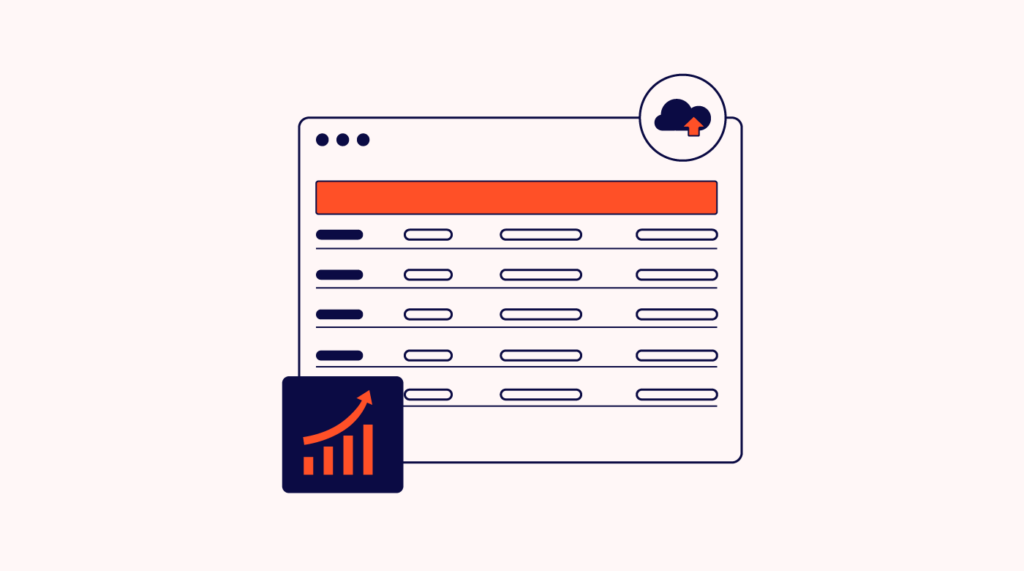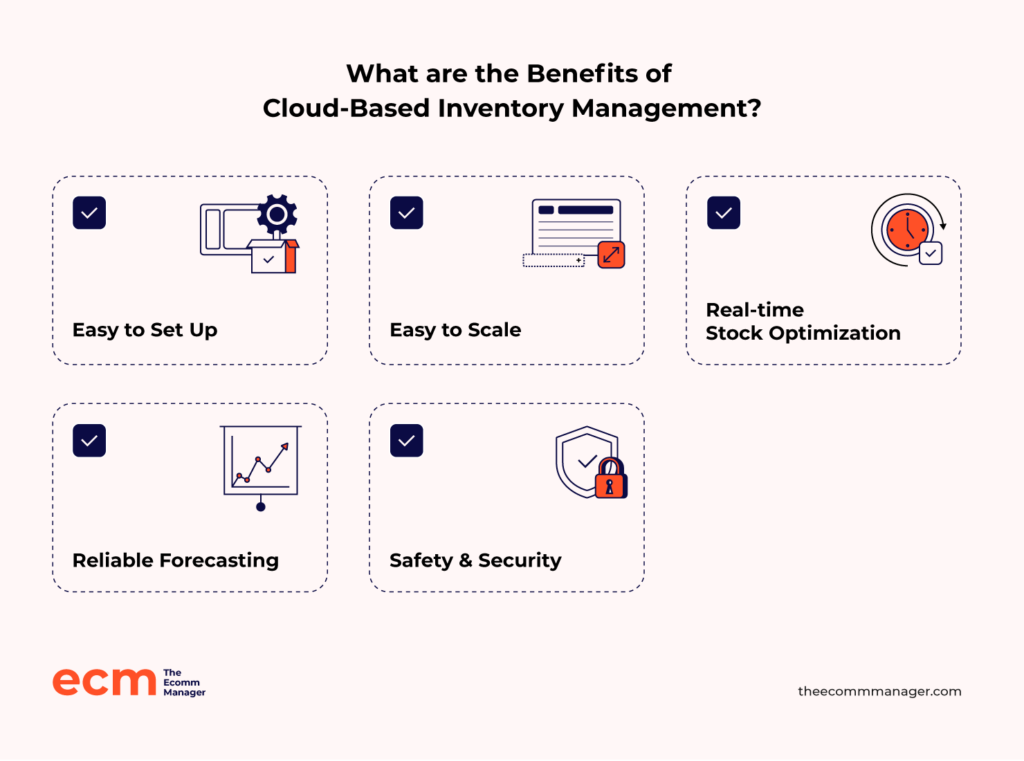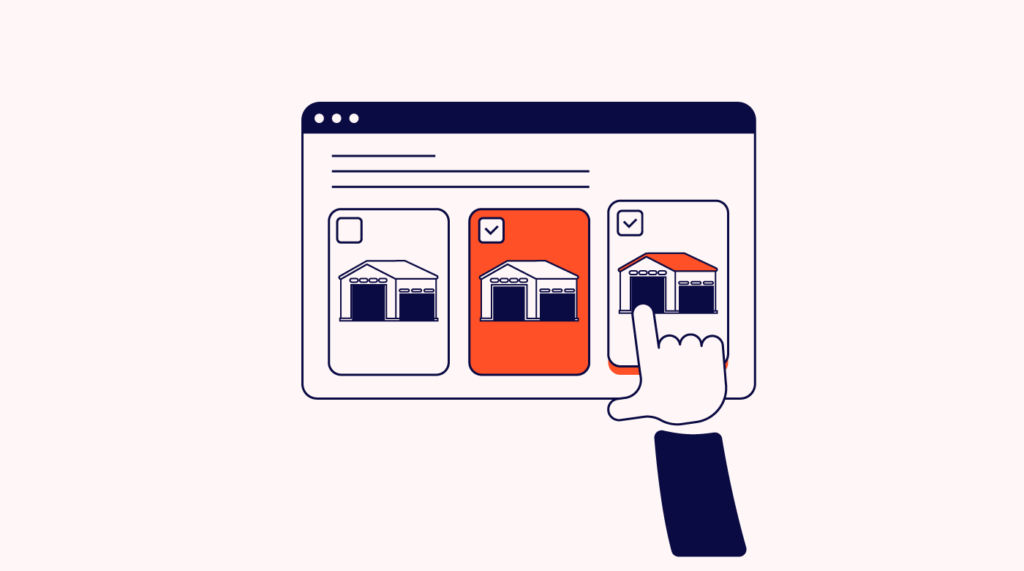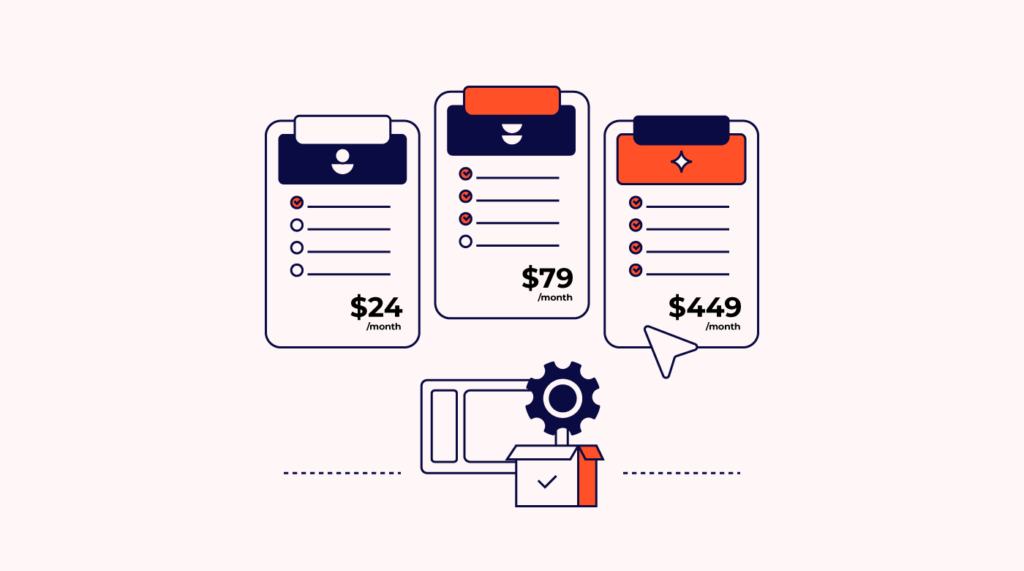Evolution of Counting: Inventory management has transitioned from labor-intensive manual counting to more accurate and less hands-on systems, thanks to technology advancements.
From Notepads to Networks: The shift from manual notation to using on-premises computers and servers marked a significant leap towards modernizing inventory management processes.
Cloud is the New Cool: Cloud-based inventory management software is the latest advancement, offering easy scalability across multiple warehouses and marketplaces with minimal hassle.
Hassle-Free Transition Tips: The article promises to provide insights on making the switch to cloud-based inventory management systems as smooth and straightforward as possible for businesses.
Inventory management has come a long way. What once required pen, paper, and a lot of manual counting work has evolved into a relatively hands-off and more accurate system.
It was a big step to move from manual notation to on-premises computers and servers for inventory. Yet, now that’s even a thing of the past.
Enter cloud-based inventory management software.
We’ll cover how to switch to a cloud-based inventory management system as easily as possible so you can spread your operations across multiple warehouses and marketplaces without headaches.
Let’s answer the key questions you may have. Like, what does cloud inventory do for growing businesses? What are the benefits these software solutions provide? How can it go wrong? Where do I start?
But, first and foremost...
What is Cloud Inventory Management?

Cloud-based inventory management systems are very similar to traditional inventory management software. Both enable you to track your stock wherever it is.
Yet, cloud inventory management takes place in the... you guessed it, cloud. No extra hardware or servers necessary.
Remote servers and the power of the internet allow you to track your inventory across your growing ecommerce empire in real time. Plus, you can automate your inventory control practices to efficiently cut costs, boost profitability, and monitor stock across your whole supply chain.
Obviously, this isn't as easy as flipping a switch.
To get the most out of an inventory management solution, small businesses need to implement a cloud-based inventory management system that's simple and intuitive and preferably doesn't take a grad school education to implement.
But, with the right tool, you can track everything that you own, including raw materials, semi-finished products, machine tools, on-premise desk chairs, sales inventory—everything.
That's a tall order, and you'll need a pretty smart inventory management software to handle the ordering, storing, consumption, and sales volume in a real-time environment.
It would also be nice if you had decent metrics to keep an eye on inventory data, workflows, and forecasting.
Recording inventory levels is one thing, but guessing what you'll need in a month takes a little extra to avoid costly under- and overstocking.
What are the Benefits of Cloud-Based Inventory Management?

There's a lot to recommend the switch to cloud-based inventory management software.
Once you get it set up, cloud-based software is easy to scale, safe, and has the functionality you can use to optimize your stock and forecast your needs for as long a time horizon as you're working from.
1. Easy to set up
To get started with cloud inventory management software, you have to have an internet connection. . . and that's about it.
Because the software is hosted on a remote server, you get the benefits of having a smart IT department to keep you updated on all the latest patches and security settings.
You can also get professional help setting up any configuration you want or making changes as your needs evolve.
2. Easy to scale
Operating from a cloud server is great for a growing business.
Scaling up in the cloud is as easy as asking your host to expand your capacity or add new functionality to your existing package.
Cloud inventory management software like QuickBooks can even scale up by interfacing with other systems.
This includes ecommerce sales tax software, point-of-sale (POS) systems, external marketplaces and other sales channels, 3PL services, ecommerce CRMs, ERPs, and more.
3. Stock optimization in real time
Real-time stock optimization is maybe the biggest step forward in modern inventory management.
In the old days, your order management placed replenishment orders as your stock ran low, usually with a two- or four-week lag.
This is a good way to run out of stock, especially in a time of shortages.
Automatically updating your stock as it moves, rather than when you have a minute to do the books, speeds up your capital and moves more products more efficiently than ever before.
Being able to track inventory in real-time and using forecasting data to make ordering decisions allows you to be agile and always in stock.
The real-time stock optimization feature of cloud-based systems revolutionizes inventory management.
For a more comprehensive understanding of how this impacts your business, explore how inventory management software benefits can streamline your operations.
4. Reliable forecasting
Good forecasting is the flip side of tracking stock effectively.
It's easier to forecast your needs tomorrow than two weeks from now, which is why the real-time tracking cloud-based inventory management software gives you allows you to order as stock gets depleted.
This effectively shortens your forecast horizon to 24 hours from now rather than 24 days like in the past.
Keep in mind that "you get what you pay for" when it comes to ecommerce business intelligence.
You won't have the same sort of forecasting power from free inventory management software as you will from enterprise-grade alternatives.
5. Safety and security
Your inventory numbers are secure documents, and keeping them safe should be a priority for ecommerce retailers in a competitive field.
Cloud-based inventory management software uses industry-standard encryption to keep data confidential, which your customers should appreciate as they send you their credit card information for billing.
How Can Cloud Inventory Management Systems Help You Automate Your Operations?
In the old days, all this tracking was done with a spiral notebook, an abacus, and colored pebbles in a jar.
But, luckily, we’ve moved on to something smarter to streamline your purchase orders and warehouse management.
Even a primitive stock management system from the '70s used barcode scanners and POS handhelds to track sales as they happened.
That data then went into digital spreadsheets to update your stock levels as they changed. This POS system never needed sophisticated accounting software to run properly.
Still, even early barcode scanning models were a huge improvement over the time-consuming chore of inputting serial numbers for end-of-month asset tracking.
Today's cloud-based inventory management software is enormously faster and more capable.
Cloud-based inventory management systems use the same barcode system but remotely monitor stock levels with real-time inventory updates to pricing, asset tracking, and order management.
Apps with higher functionality can help improve forecasting, sales orders, and notifications any way you want to get them.
Say you have a solid ecommerce T-shirt business that's been growing steadily. Now you're expanding the supply line to manufacture some of your own shirts instead of importing them.
This widens your margins and adds a lot of complexity to your supply chain and inventory management.
With a cloud-based inventory management system, you can track the stock at every step. From the delivery of the T-shirts and printing supplies to the finished product in the warehouse, and delivery to the customer after it's shipped.
How to Choose the Best Cloud-Based Inventory Management System?

There are several cloud-based inventory management software products out there, and if you're going to get a good one, it helps to know what you're looking for.
You want something that's easy to interface with on multiple platforms, integrates multiple functions into a smooth workflow, and optimizes industry best practices to get the most out of the package you're paying for.
Cloud inventory platform features
Everybody needs something different from their cloud solution. The shortlist of inventory management features you need to look for is:
- Everything in one place. With one warehouse or multiple, you can track it in a centralized place. This also includes your extra sales channels, like eBay, Amazon, Walmart, in-store POS, etc. Integration with your ecommerce platform, be it Shopify, WooCommerce, or Adobe Commerce, brings your whole operation into a single database.
- Supply chain visibility. Not only can you see what SKUs you have in stock and shipping out, but you can also see your incoming orders for full visibility of operations.
- Integration with order fulfillment processes. Your stock is always in motion, so it’s important you can see quotes for shipping things out, as well as label printing functionality.
- Notifications: You need to know when something is running low, and you need to know it right away. A good program lets you pick how you get notifications of impending stockouts.
- Multiple access points: You will connect with this software from your office, warehouse, and mobile device. It must be equally accessible from all points, or you'll be back and forth between locations to update your orders.
- Tracking of orders: Order tracking is an obvious must-have feature. An inventory manager who can't see real-time moves is of limited value to your Amazon store, let alone to an online or brick-and-mortar store.
- Smart carrying: If you have stuff in multiple warehouses, which one are you using to fill orders? Good software will let you designate a first-choice fulfillment center, with the less efficient choice as a backup. It should also permit seamless inventory transfers between locations.
- Integration: The benefit of cloud software is the connectivity it brings to the game. Your software should be talking to logistics partners, order pullers, vendors, and even customers as part of your sales support system.
- Dedicated B2B support: Your business interacts with other businesses, even if you're primarily a customer-facing company. No matter how customer-focused you are, you still have vendors and contractors, and they might as well have managed inputs from your various sales channels.
How Much Does Cloud-Based Inventory Management Software Cost?

The cost of cloud-based inventory management software can vary depending on various factors such as the specific features, scalability, user licenses, and the chosen provider.
As you’ll find from our in-depth breakdown of the top cloud-based inventory options, prices can range from as little as $79 per month to as much as $449 per month. Some options go with per-user pricing of anywhere from $24.90 to $49.80 per month.
Obviously, your pricing can depend on your brand’s size and needs.
Larger companies using enterprise inventory management software may pay anywhere from $1,000 to $10,000+ per month.
Some offer tiered pricing plans based on the number of orders or products managed. Basic plans can start at $50 to $100 per month. More advanced plans with unlimited orders or products can reach the higher end of the price range.
We should note that these figures are approximate and can vary significantly depending on the software's capabilities and pricing structure.
Cloud-Based Inventory Tools to Consider
Nowadays, there are tons of options for managing your inventory in the cloud. So many, in fact, that it can be easy to get lost in the search.
Luckily, we’ve got experts who dig through all the SaaS software to give you the facts on the best tools.
From our comprehensive list of the top cloud inventory systems, you’ll find details on the following options and more:
- SkuVault
- Linnworks
- Cin7
- MRPeasy
- Helcim
- Odoo
- Zoho
- Sage X3
- inFlow
- Fishbowl
We give each tool a score based on precise selection criteria including core functionality, additional standout features, usability, onboarding, customer support, value for money, and customer reviews.
See You in the Cloud?
Just as with anything, inventory management is evolving. And, thankfully so.
It’s easier than ever to see where all your stock is across your scaling ecommerce brand. While you still need to get eyes on stock for cycle counting, there’s no need to maintain those penciled paper records anymore.
Put the abacus away.
Now that you know all about cloud inventory management, it’s time to go find the solution that best fits your brand’s needs.
Stay up-to-date on all things ecommerce by subscribing to The Ecomm Manager newsletter, where we’ll surface the latest insights from the wonderful world of ecomm operations.


